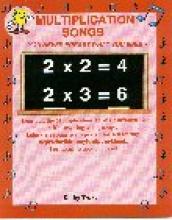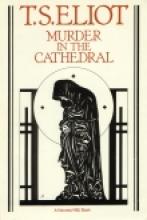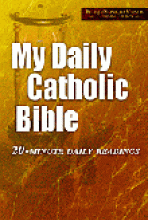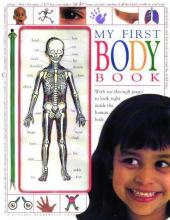No name
Multiplication Songs
Murder in the Cathedral
Various editions available
Music Theory Learning Wrap-Ups: Introductory Kit
Kit includes four sets of 10 flashcards: Keys & Notes, Signs & Symbols, Rhythm & Vocabulary, Intervals & Chords
Our family has been enjoying Learning Wrap-Ups in a variety of subjects to drill and practice basic concepts. Each set consists of ten key-shaped plastic flash cards attached at a pivot-point with a string to wrap back and forth from question to answer. After finishing each key, simply look at the back to be sure the string matches up with the self-correcting answer key. I love how my children can study independently with these sets AND they can be used over and over again. They are sturdier and more self-contained than ordinary flash-cards (and don't get lost under the couches!). Learning Wrap-Ups may be purchased one set at a time or in money-saving multi-set kits.
This music theory kit includes four sets of Learning Wrap-Ups on Musical Theory for piano students:
Keys and Notes: Match notes on a staff to keyboard, letter notes to keyboard, notes with the same name on different staffs, fill in notes sequentially, etc. Includes some sharps and flats.
Signs and Symbols: Match musical terms (like mezzo forte and descrescendo) to their abbreviations, match musical symbols (like repeat, sharp and treble clef) with their meaning, find the relative minor for each major key, match the key with its signature in the treble clef, etc.
Rhythm and Vocabulary: Match notes to rests of equal value, match musical terms (like dolce and lento) to their English translations, match note groups of equal value, "How many counts per measure?", etc.
Intervals and Chords: Find the note to complete the chord, Match the chord with its name, Match triads to their black & white key patterns, etc.
Each set may also be purchased individually.
Made by Learning Wrap Ups.
My Advent Calendar
My Book of Prayers
My Brother Sam is Dead
The boy, Tim Meeker, is witness to the chaotic events of the war. The book gives a good description of the confusion of the times with occupying armies and defiant citizens, senseless death and seemingly cruel punishments. Tim's brother, Sam, joins the patriot army against his father's wishes and even returns to steal his father's gun. Sam's father is a staunch loyalist and scandalized by his son's behavior. The father has also had a taste of war in the French and Indian war and does not want his son to have to experience the horror of it. The son thinks he knows better.
As the war progresses, and goods become scarce, armies on both sides resort to commandeering or stealing for food and supplies. Tim's father is arrested as he is bringing a load of supplies to the tavern he runs and Sam is arrested for stealing cows, which he did not steal. Tim's father dies on a British prison ship and Sam is executed by his own army for theft. The scene of the execution is somewhat unsettling as are other scenes like it in the book.
This is definitely an anti-war story. The authors end the book by asking if we might have been able to accomplish independence without a war. Throughout the story the atrocities of war are reflected upon by Tim and there are many quotes by Tim's father about the price of war, such as, "In war, the dead pay the debts of the living." This slant by the author would make a great subject for discussion.
Another very interesting aspect of story is that the rebellion of the son to his father directly parallels the rebellion of the colonies to the father country, England. The exchanges between father and son could be laid right across the colonies and England. Yet another interesting aspect is the irony of the deaths of father and son. Father, as a loyalist, dies in a prison ship as a prisoner of the country he professes and Sam, as a rebel, dies at the end of an firing squad of his fellow patriots. All of these make this book a great vehicle for discussion of author's bias and purpose, of literary devices such as irony and story structure, and finally of the ideas behind the war itself.
However, there is one great drawback to the story. There is an enormous amount of swearing in it, including taking the Lord's name. If it were just once or twice, you might be able to overlook it, but one teacher I know counted and found over fifty instances of swearing. If you want your children to have the experience of the book, you might consider reading it aloud and editing out the swearing as you read. However, there are many other books available which discuss the ideas of the Revolutionary War while avoiding this drawback.
Newbery Honor Book
My Cup of Tea
My Daily Catholic Bible
This is an idea whose time has certainly come. Over the past few years a resurgence in Bible reading seems to have swept across the United States. You can hardly walk through a Walmart or an average bookstore without coming across all sorts of Bibles for all sorts of people. One big problem - it's difficult to find these user-friendly Bibles in Catholic editions.
This is no longer the case as Paul Thigpen has thoughtfully assembled this Daily Catholic Bible, broken down into 20 minute segments to read each day. The Bible is organized according to the calendar and also offers the Saint of the day and a short quote for each day as well. The Bible is a manageable size (and price) because of the special thin paper commonly used in Bibles. But the best news is that the translation is the excellent "Revised Standard Version: Catholic Edition." No feminized language or politically correct interpretations here!
This is probably best suited for adults or fairly ambitious teens. It would make a great New Year's resolution to read the entire Bible next year by getting through just a little bit each day. I'm going to try. Won't you join me?
Updated by webmaster, March 2024: Sadly, since this review, My Catholic Daily Bible has switched to using the NABRE — see our review here, so we can no longer recommend it.
My First Body Book
This is a fun and very kid-friendly introduction to the body and its various functions and capabilities. It begins with a set of transparent overlays which portray the skeleton (skeletal system), the heart, lungs and blood (cardiovascular system), and the brain and nerves and digestive system. When I first got this book (back in the days when I was a DK representative for a short time) I worried that this book wouldn't hold up very well. After more than three years of use by little hands, I have to admit it's done quite well.
The rest of the book provides simple text, funny illustrations and the trademark DK photos covering the following topics: faces, skin and hair, muscles and bones, blood and heart, lungs and breathing, digestion, brain and nerves, eyes and seeing, ears and hearing, taste and smell, touch, growing up and "all about you."
The digestion is handled quite politely (no graphic pictures) and I was pleasantly surprised at how well the "growing up" section was handled. It begins with a very sweet and simple explanation of conception "A baby starts when a tiny sperm from the father joins with an egg inside the mother. The egg attaches itself to a part of the mother called the womb..." (pg. 29) and goes on to descriptions of the various stages of development of an unborn baby. Although the term fetus is mentioned, the baby is called a baby throughout the text!!! Again – no yucky pictures but not twaddly or dumbed-down either.









